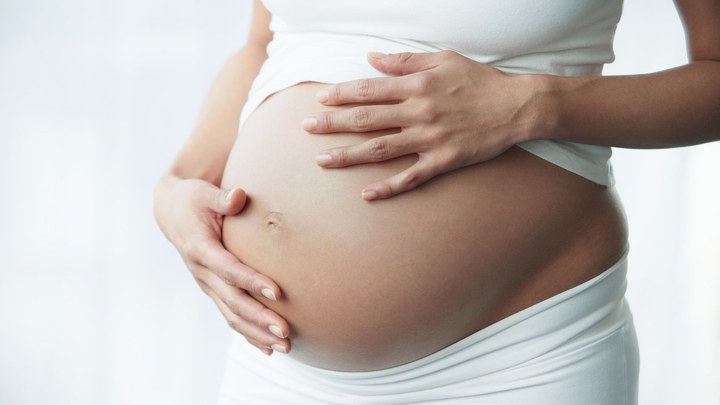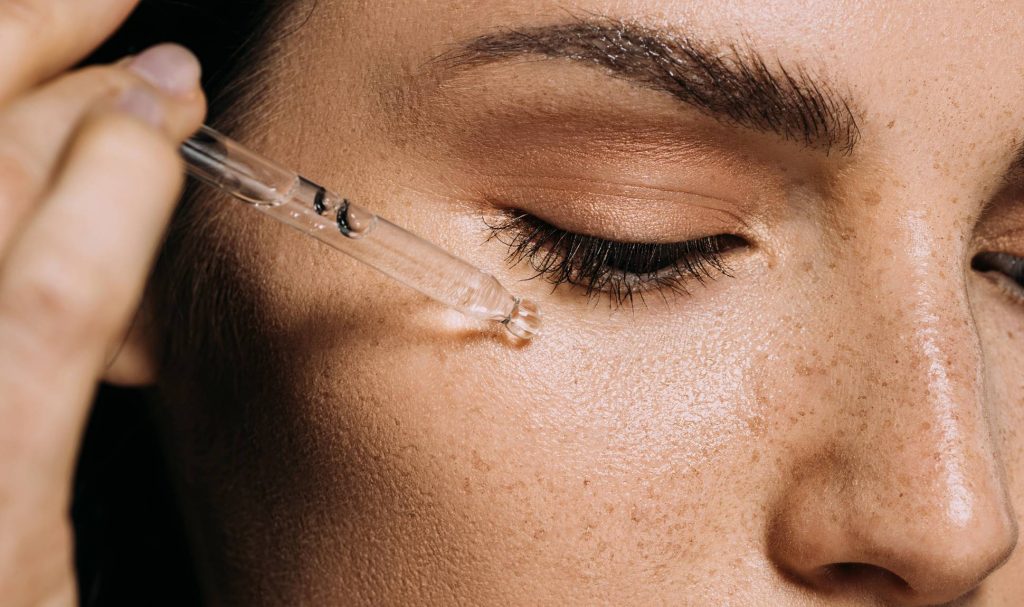It’s easy to think that biggest bodily change that comes along with pregnancy is also the most obvious to spot. (Hello, bump!) But the very real pregnancy skin issues are an area of concern for many women, Abigail Waldman, a dermatologist at Brigham and Women’s Hospital in Boston tells Allure. So what should soon-to-be mamas expect? Below, common (and rare) skin changes to keep an eye out for as your tummy — and your family — expands.
The glow is real.
You know those people who said they could just tell you were pregnant? “Pregnancy causes increased blood volume and the skin swells causing the famous ‘pregnancy glow’ — some notice a little healthy ‘flush’ as well,” Jennifer MacGregor, a dermatologist at New York City tells Allure. Enjoy the look while it lasts. In the second and third trimester, pigmentation, swelling, and stretch marks show up, she notes. Ugh. (More on that later.)
Stretch marks aren’t fully in your control.
…And you’re not alone. “Stretch marks are really, really common — about 75 percent of pregnant women experience them,” says Waldman. Docs aren’t sold on why they pop up in some women and not others, but there’s clearly a genetic component, says MacGregor, who adds that age (younger women are more vulnerable) and rapid weight loss or gain can also enhance their occurrence. Since stretch marks have to do with … well … stretching skin, they’re more common on your stomach, notes Waldman. “They usually start red and inflamed and progress to white, thin line marks that look and behave like a stretched scar,” says MacGregor.
Topical vitamin E may might help fade them a little, says Waldman; glycolic acid is a better bet (and in the right formulations, safe to use during pregnancy). Just check with your doctor, midwife or doula before you start playing product roulette — some products (even OTC ones) aren’t safe during pregnancy, she says. If the marks are bugging you post-birth, talk to your derm about topical creams like retinoids; or laser therapy, which can improve their appearance. There’s also our guide from dermatologists about treating them at home. Otherwise? Embrace ‘em Chrissy Teigen-style! They’re proof of how badass your body is.
If your freckles, age spots, or moles look darker, you aren’t going crazy.
About 70 percent of women experience melasma, a patchy darkening of the face that happens during pregnancy (buh bye, glow). And, for this, science says your hormones are to blame. “Estrogen stimulates an increase in pigment production leading to darker freckles, worsening brown patches on the face, and even darker moles,” says MacGregor. For the same reasons, you might notice darkening around your nipples or a dark stripe on your abdomen called linea nigra, notes Waldman.
How to cope? Stay on top of your SPF game. “Sun exposure combined with hormonal changes play a role in darkening the skin,” says Waldman. Try: EltaMD UV Physical Broad-Spectrum SPF 41. Topical vitamin C might also subtly brighten you up, both docs agree. In most cases, this temporary darkening resolves on its own in six months, says Waldman; in some women, it’s more persistent. If you fall in the later category, ask your derm about mild brightening laser treatments and topicals like retin A, suggests MacGregor.
It’s also über important to keep up with regular skin exams during the nine months you’re pregnant. Thanks to stretching skin and darkening, moles can change when you’re expecting, says Waldman. “Most of the time, it doesn’t mean anything, but sometimes changes can be suggestive of melanoma.” Make sure you keep your dermatologist in the loop about any funky looking moles.
There’s two reasons for skin tags.
Notice little projections of skin start to crop up under your breasts, on your neck, under your arms, or in your groin area? You’ve likely found a skin tag. They form when you have areas of skin rubbing up against each other, says Waldman (something that’s naturally going to happen more when you gain weight). Hormones likely play a role in their growth, too, she says, seeing as how sometimes they pop up in areas that don’t rub. Some ladies are just genetically inclined toward the pesky tags, says MacGregor. Most of the time, they’re harmless. If they’re bothering you? Your dermatologist can snip them off post-pregnancy in a pretty easy procedure.
Acne isn’t a given.
Here’s the thing about hormones: “Everyone reacts to them differently,” says Waldman. That means while some women notice that acne acts up when they’re preggers; others notice clearer skin. But if you see some zits along your jawline, that’s likely due to an increase in oil production — a result of hormonal changes, Waldman says. Check with your doc before self-treating with an acne medication, topical, or wash. Some — like isotretinoin (formerly known as Accutane) and retinoids — aren’t safe during pregnancy. The American Congress of Obstetricians and Gynecologists has a helpful rundown on their site of the risks associated with many common topical skin product active ingredients, and which others are considered to safe to use.
Oh, and your tummy might be a little itchy.
A growing stomach might also be an itchy stomach. “When the skin stretches, it can be come dry, tense, and irritated,” says MacGregor. “Using really great moisturizers and soothing ointments can help,” she says. Her fave: Dr. Rogers Restore Healing Balm. Just note: If the itching doesn’t resolve, mention it to your ob-gyn. A rare late pregnancy liver and gallbladder called intrahepatic cholestasis of pregnancy (ICP) has symptoms of severe itching and can increase your risk of delivering prematurely.
There are also two other rare rashes that can happen during pregnancy — and both can cause itching, says Waldman. Talk to your doc if you notice symptoms of either. The first: Pemphigoid gestationis, a blistering disorder associated with premature birth. The second: polymorphic eruption of pregnancy (PUPP), a hives-type rash that starts in the stretch marks and other fatty areas. This one is harmless but can be accompanied by extreme itching, she says.




